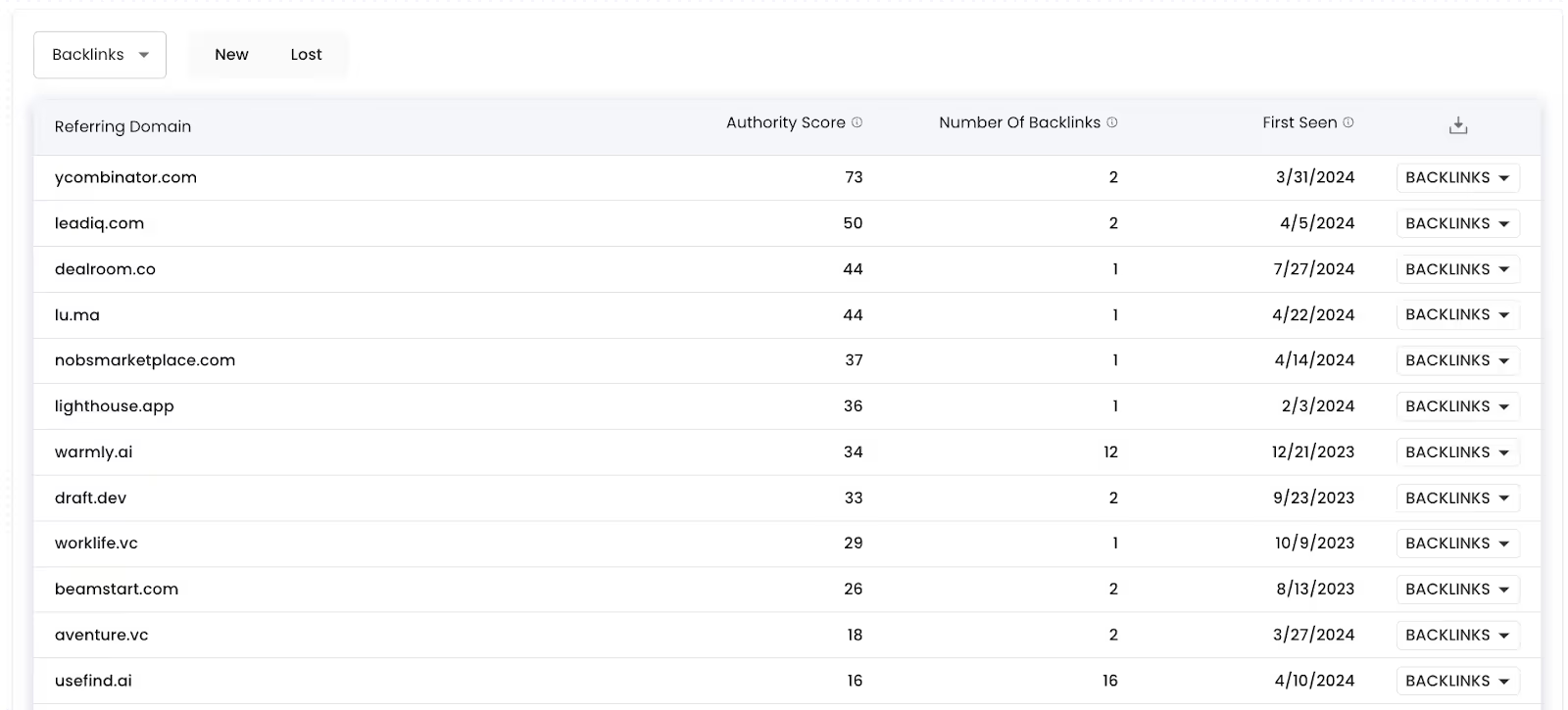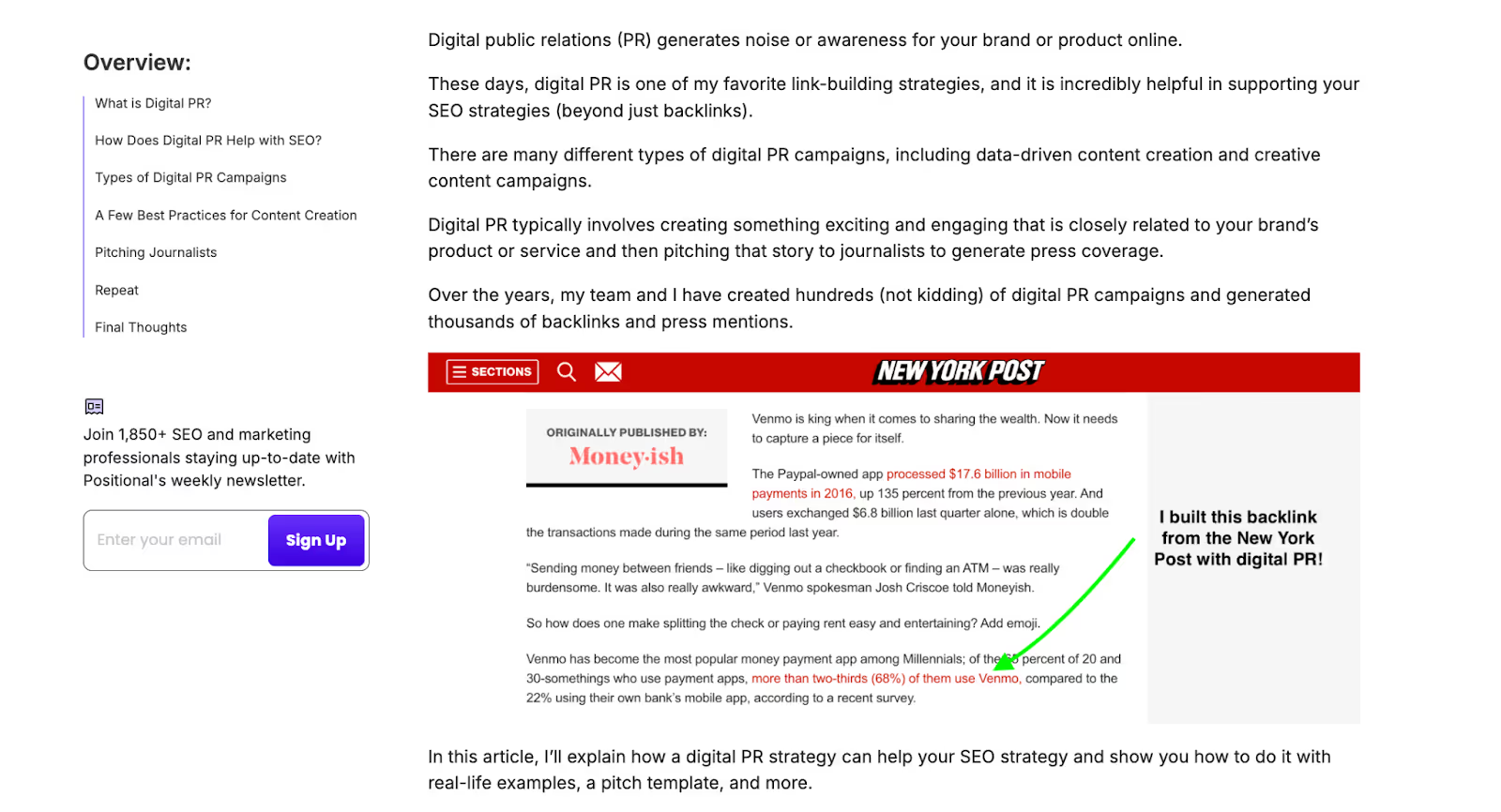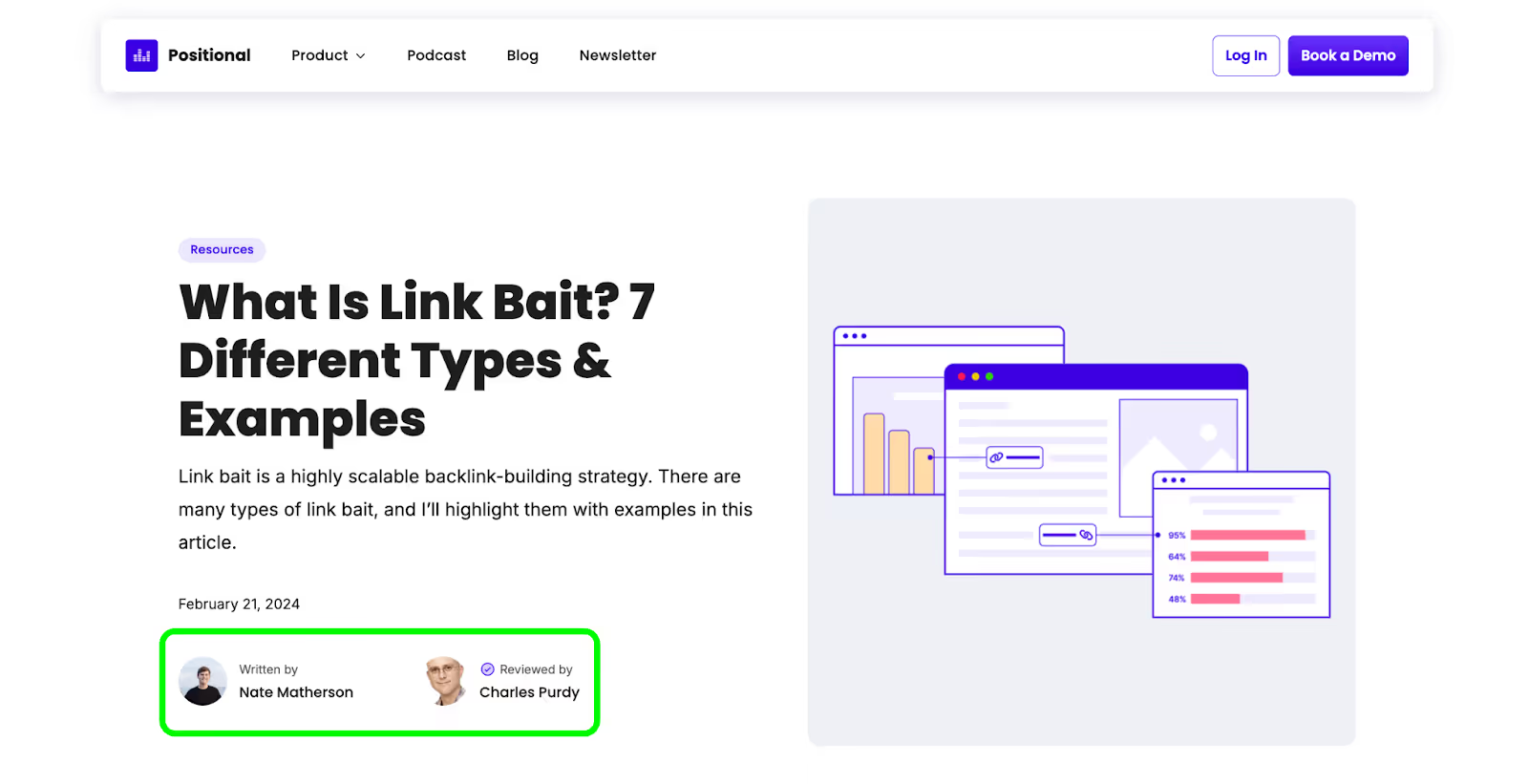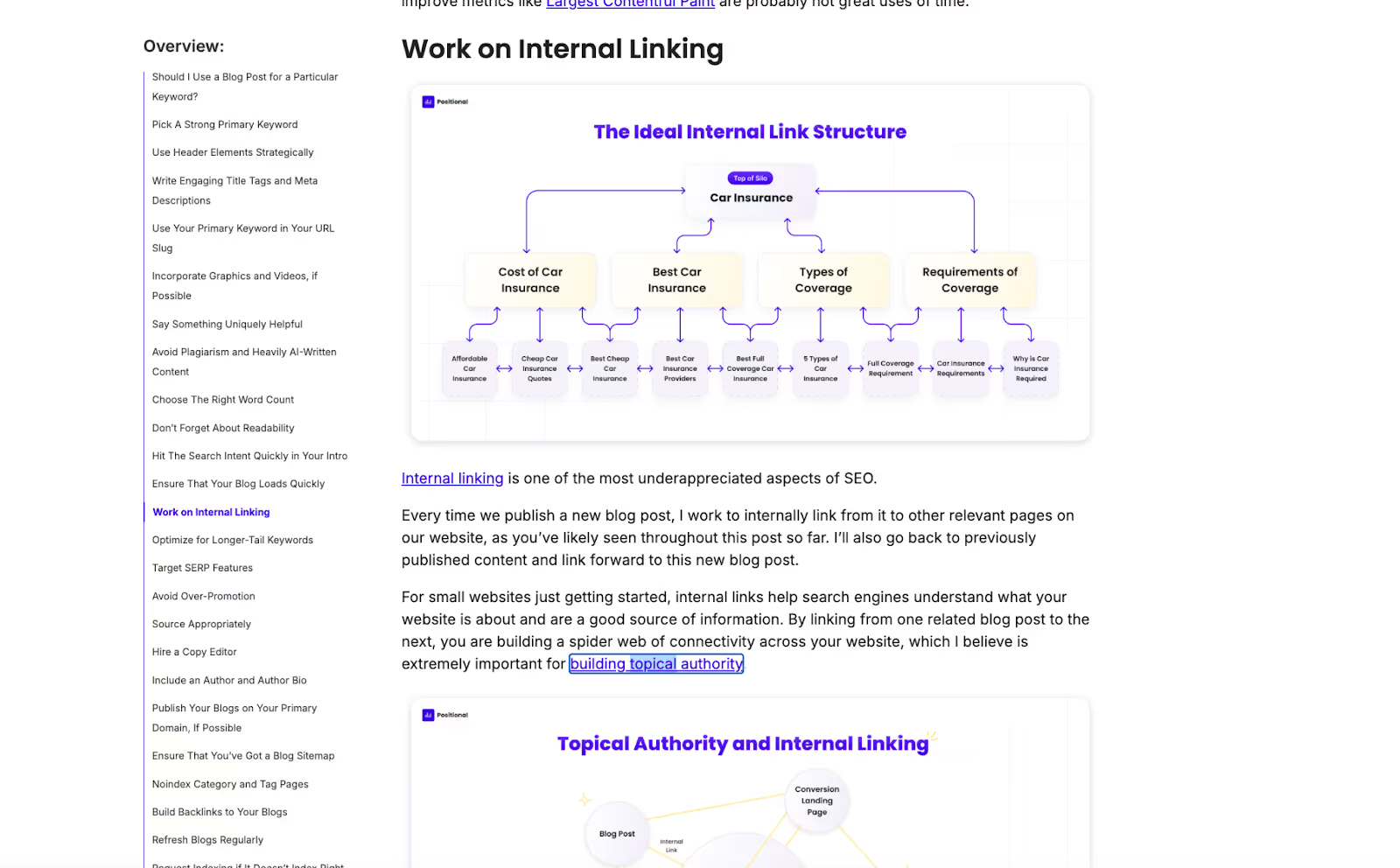Backlinks have always been an important search engine optimization (SEO) ranking factor. And there are a lot of different ways to build backlinks, but one of my favorite methods is the skyscraper technique.
Popularized by Brian Dean of Backlinko, the skyscraper technique is a link-building tactic that involves finding a competitor’s webpage (or a webpage related to your industry or topic space) that has a lot of backlinks, creating a similar but higher-quality version of that webpage, and then contacting the websites that are linking to that other webpage and inviting them to link to your version instead.
In some ways, the skyscraper technique is a little like stealing, because it involves trying to “steal backlinks” away from other websites. If you convince a website to remove a link going to one of your competitor’s pages and add a link to one of your pages instead, that’s a win-win, as you’re reducing your competitor’s page authority and increasing your page authority.
But you don’t always need to pitch your page as a total replacement for a competitor's content. (More on that later.)
In this article, I’ll explain how to implement the skyscraper technique, find competitive webpages, and identify the websites linking to them, and I’ll provide you with a sample script that you can use in your email outreach.
What Is the Skyscraper Technique?
No one pays attention to the seventh-tallest building in a city, but they certainly pay attention to the tallest building in a city.
Brian Dean based the name “skyscraper technique” on this concept. The goal is to build the tallest building in the city or, in content terms, the most comprehensive and highest-quality piece of content within a topic space.
People want the best, and if we build the best piece of content on a particular topic, folks will want to link to it. They’ll certainly prefer it to a much lower-quality piece of content that they might already be linking to.
There are three steps to the skyscraper technique:
1. Find a relevant topic space where the top-performing webpages have a lot of backlinks pointing to them. Another approach would be to analyze a competitor's entire website and try to identify the webpages that have the most backlinks.
2. Choose one of those existing pieces of content, and create a better piece of content on that topic. There are lot of ways to do this — for example, by creating content with helpful graphics or content that is more in-depth or perhaps more current.
3. Email websites that are linking to the lower-quality content and ask them to link to your webpage instead.
I’ll walk you through how to do each of these steps a little later on.
Of course, the skyscraper technique is just one of many link-building methods. By building backlinks to your website, you can improve the search engine rankings of specific webpages and your website as a whole.
Backlinks signal to Google and other search engines that your webpage is a good one — they are a sort of vote of confidence. While Google doesn’t publicly display its PageRank formula anymore, backlinks are still very important to Google when it’s determining the order of websites on the first page of search results.
Additionally, if you’re building links from webpages that are already getting significant traffic, you might be able to generate meaningful referral traffic to your website in the process.
Benefits of the Skyscraper Technique
Using the skyscraper technique to build backlinks has many benefits.
You Can Build Backlinks to Specific Webpages
With the skyscraper technique, you can pick which webpages to focus on. Unlike some other link-building strategies, the skyscraper technique allows you to concentrate on building links to specific high-value pages on your website.
For example, if you were implementing a digital PR link-building strategy, you’d be able to increase your domain authority broadly, but you probably couldn’t target a specific keyword with the webpage you’re building backlinks to. Conversely, with the skyscraper technique, you can build page authority directly to the webpages on your site that target very specific keywords you care about.
It Is Scalable
Like guest blogging, the skyscraper technique allows you to concentrate your link-building efforts on very specific pages on your website. However, unlike guest blogging, the skyscraper technique is much more scalable and doesn’t require that you write many unique pieces of content for guest contributions.
With the skyscraper technique, you need to create only one fantastic piece of content — then you could realistically pitch it to hundreds of websites and build many backlinks in the process. With the tools available today, finding websites to pitch and collecting the relevant email addresses for folks to pitch is fairly easy, and it can be automated.
For Competitive Keywords, It Might Help You Get an Edge
With this method, you can build backlinks to very specific webpages that you care about. This might allow you to rank faster and better for more competitive keywords.
For example, I started my career in the very competitive consumer finance niche, and for many of our highest-value keywords, we had to build backlinks directly to the webpages that we were using to rank for those keywords.
Moreover, in the process of building backlinks with the skyscraper technique, you can convince a website owner to remove a link to a competitor’s website and replace it with a link to your site instead. This means you’ll reduce the competitive website’s PageRank and increase your own, making it easier to jump above them on search engine results pages (SERPs).
How to Implement the Skyscraper Technique in 3 Steps
Step 1: Identify the Right Topic
Ideally, you’ll want a topic that’s relevant to your business and serves a specific keyword that you want to rank for. You’ll also want to pick a topic for which the current top-ranking search results have already acquired a meaningful number of backlinks.
You’ll often hear the phrase “linkable asset”: this is simply a type of webpage that you can use to generate backlinks more easily because it serves a topic that folks would want to link to.
Whenever I’m considering a topic for the skyscraper technique, I like to focus on how-to guides (for example, “How to do Keyword Research”), listicles (“X Best Ways”), and statistics webpages (“27 SEO Statistics in 2024”) — statistics pages can also be used as link bait.
But, of course, you could also consider using templates, infographics, reviews pages, and buying guides for the skyscraper technique.
As one example, Brian Dean’s blog post about the skyscraper technique has earned backlinks from more than 2,000 referring domains, or unique websites, and has a page authority score of 67:

We could, in theory, use the blog post that you’re reading right now for a skyscraper link-building campaign, given that a lot of websites are already linking to Brian’s post on this topic.
As another example, for a very evergreen keyword like “content marketing,” we see that the Content Marketing Institute and Mailchimp are currently ranking first and second:

And these webpages have accumulated a serious number of backlinks, with the Content Marketing Institute and Mailchimp having more than 5,000 and 1,000 referring domains, respectively. Using an SEO tool, you can view the individual backlinks pointing to these pages and export them for later.
For a webpage to be a good candidate for the skyscraper technique, the top search results for the given keyword should have at least 50 or more referring domains cumulatively; otherwise, there just might not be enough websites to pitch to link to your new page instead.
Another approach would be to analyze all of the webpages on a competitor's website and determine which webpages have the most backlinks today. You could use a tool such as Positional, Ahrefs, or Semrush for this analysis.
For example, in an SEO tool, you can view all of the backlinks pointing to our domain:

Then, on a page-by-page basis, you can view which webpages have the most backlinks pointing to them, as these webpages might be good candidates for the skyscraper technique.
Even better, if you spot an outdated or very old competitor webpage with a large number of backlinks while doing this analysis, you might have an opportunity to create a webpage that is more up-to-date, more relevant, and therefore easier to pitch.
Step 2: Make Your Webpage a Better One
There are a lot of ways that you can build a better webpage and outdo your competition. And you may want to use a few of these suggestions in combination.
Go More In-Depth
Simply put, you can go deeper with your piece of content. While the number of words on the page isn’t always the best metric for determining the helpfulness of a piece of content, if you see that a competitor’s webpage is lacking depth and that there’s a lot more you could say, go for it.
When putting together a content outline, I always have a section for information gain, or the section(s) of my content that adds something new to SERPs.
Provide More Up-to-Date Information
In our topic space, SEO, things like best practices and relevant information are constantly changing. If you’re in a similarly fast-changing industry and you identify a competitor’s piece of content that has a lot of backlinks but is from a year or two ago, there may be an opportunity to create a more updated piece of content for the current year.
Add Unique Perspective
I often tap into my personal experiences when writing our blog posts. I share stories and examples, and I often quote expert guests from our weekly SEO podcast in our content.
If you can approach a topic with a unique perspective, your content can shine.
For example, when writing our blog post about digital PR and link building, I shared actual examples of backlinks that I built using digital PR:

And in my article about link bait, I quoted Jeffrey Trull, a recent guest on our podcast, who built thousands of backlinks using statistics pages:

Showcase Your Credentials
Make sure that you showcase your credentials on your webpage. They might include licenses, qualifications, or places that you’ve been published before — you should make it clear in a split second that your website was written by a true expert in the topic space.
On our blog, we use clear bylines to make it clear who wrote our content, who reviewed our content, and why those people are experts:

We also include bios that showcase the experience of our authors:

Include Helpful Graphics and Videos
Professional-looking graphics and videos are a great way to make your content stand out.
Throughout our blog, you’ll notice that we often create custom branded graphics, and we embed them within our content:

We also embed videos from YouTube when helpful to add context for readers:

Have a Clean and Professional UX/UI
You should invest time and money in having a beautiful website design. A stock WordPress template is going to look a lot less professional than a custom UI.
On our blog, we’ve worked hard to deliver an experience on both mobile and desktop that builds trust quickly.
Step 3: Pitch Folks to Link to Your Webpage
Now that you’ve created your content, the next step is to pitch that content to the websites that are already linking to the webpage you’ve created a higher-quality replacement for.
If you used an SEO tool to determine which websites are linking to your competitor's webpages, the next step would be to determine who the right point of contact is for your email outreach.
This step is critically important.
Sometimes it’s easy — if you know the author of the webpage, it might be no problem to find their email address in their author bio. However, sometimes it’s a little harder — for instance, if there isn’t a clear author byline on that piece of content. In such a case, you might need to reach out to an editor. There are also plenty of tools for figuring out someone’s email address, including Hunter, ZoomInfo, and RocketReach.
You also want to be thoughtful about who you’re reaching out to. An independent blogger is much likelier to update a link on their website than a large publication like the “Wall Street Journal.”
You could also apply some filtering to your list of linkers, removing forums, directories, and other non-editorial webpages from your outreach campaign.
Don’t be surprised if you need to reach out to 100 or more websites to earn just a few backlinks.
You might use a script like this:
--
Subject: Update Outdated Content
Hey {insert first name},
Hope your week is going well.
Earlier today, I read your article on {insert topic, link to webpage}, and I found it really helpful.
I noticed that you linked to {insert name of competitor}’s article about {your topic} in your piece. This resource was really helpful, but I noticed that it was a little outdated.
Just wanted to give you a heads-up that I recently wrote about this topic on {your blog}. It was just published, so it’s up-to-date. I’ve embedded a number of helpful graphics and a video in my post that might make this topic a little easier to understand.
Feel free to include a link back to my blog post if you’d like.
In any case, keep up the great work!
Best,
--
It might go without saying, but you can also use email scheduling and personalization tools to send these emails so you don’t manually need to draft and send each email.
Use It Alongside Other Link-Building Methods
The skyscraper technique is certainly effective, but like most link-building strategies, it should be used alongside other methods. Ultimately, you want to build a natural-looking link profile, and accumulating many different types of backlinks is the way to do that.
Of course, there are strategies like guest blogging, or writing a guest post for another website in your niche and strategically linking to webpages on your site within that post. When conducting a skyscraper link-building strategy, I’ve found that if you have initial success (a website swaps your link in), you might be able to ask for more — for example, a guest blogging opportunity on that website.
Another popular strategy is creating link bait. Link bait is content designed to accumulate backlinks naturally, such as statistics pages. Link bait is often a great asset for the skyscraper technique, too, given that statistics are constantly changing and website owners might be more willing to link to an updated set of statistics.
And then you’ve got digital PR, or data-driven content, as I like to call it. Digital PR involves creating an interesting and engaging piece of content, often using data from surveys or studies, and then pitching that report to journalists so they can write about your research (and link to you in the process).
Using these methods in combination will allow you to build a more natural link profile, build more backlinks overall, and help you and your team avoid burnout from focusing on just a single method day in and day out.
Final Thoughts
The skyscraper technique is a tried-and-tested link-building strategy that can be used at scale. Of course, this method should be used alongside other link-building techniques, but it is unique in that you can build backlinks to very specific webpages on your website and potentially steal backlinks away from competitive websites in the process.
Don’t get discouraged if your first attempt at this strategy isn’t a complete success. It takes some practice to get the pitch scripts right and build the right webpages. And you’ll likely need to email hundreds of websites asking them to link to your webpage to build possibly just a handful of backlinks. It’s a numbers game, and you’ll want to build the right processes so you aren’t manually sending each email.





